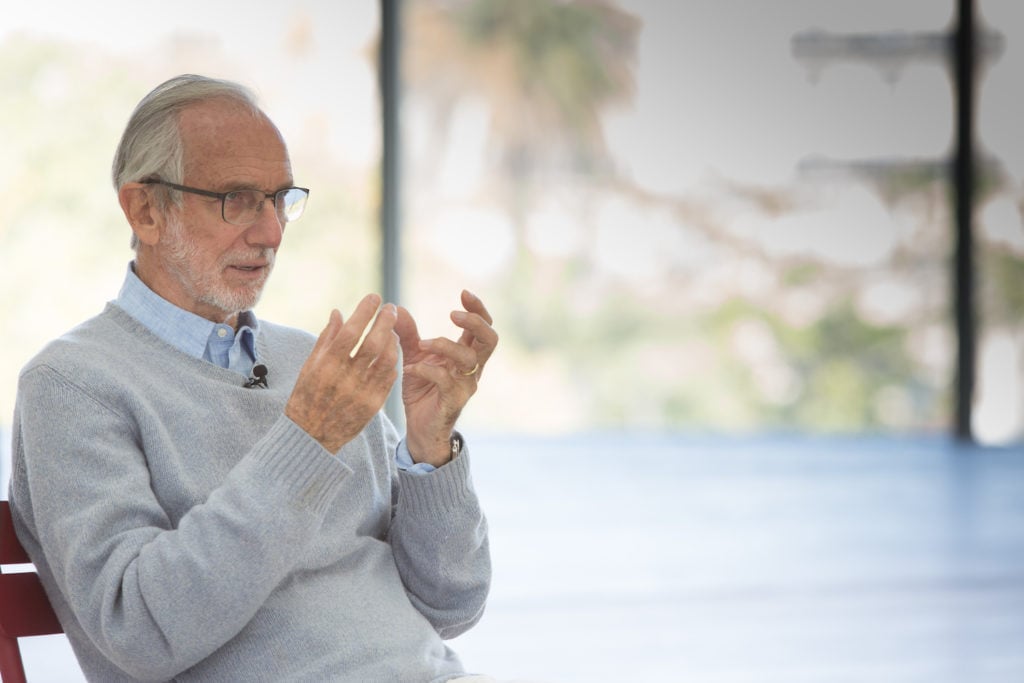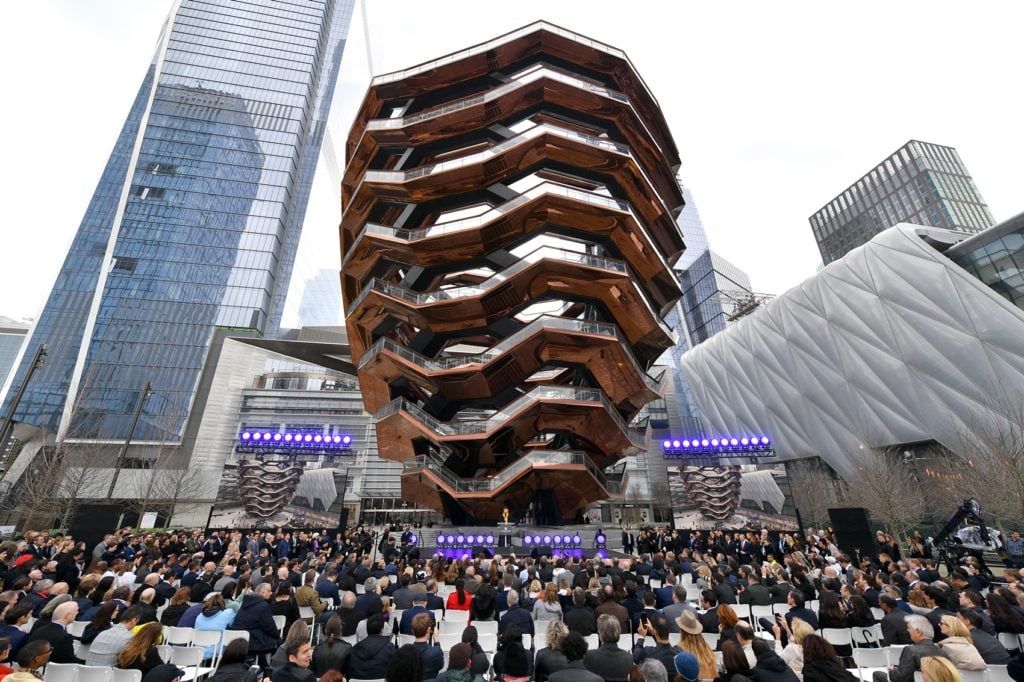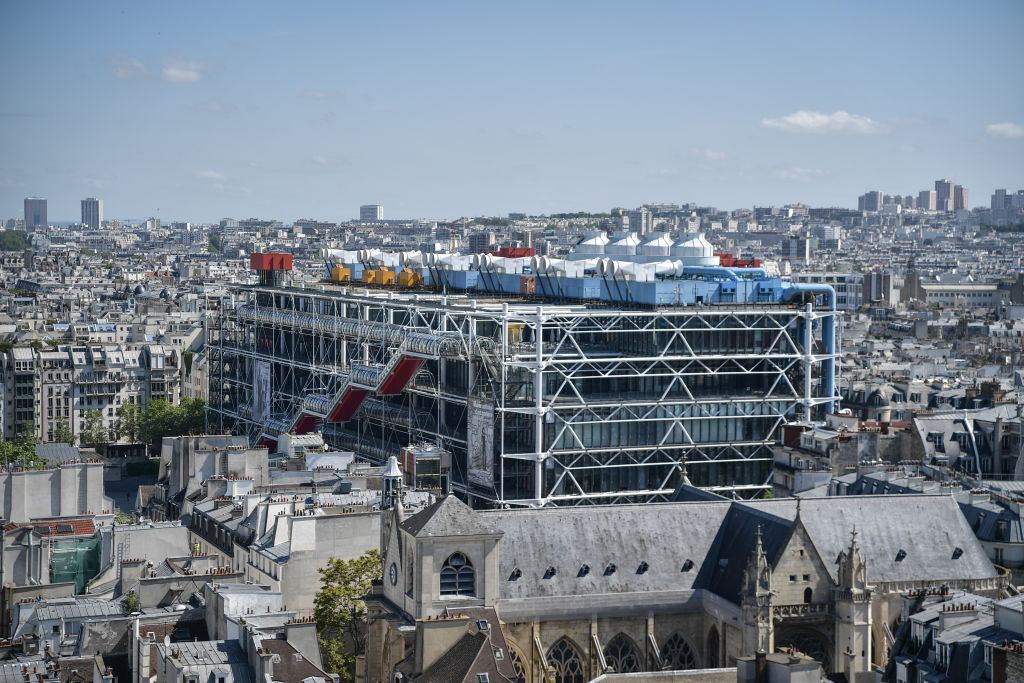Content warning: This article discusses suicide.
A month ago, a friend of mine died by suicide in circumstances that still seem devastatingly unreal. This friend who was a talented poet, writer, former music journalist, and singer-songwriter took her own life by leaping over security railings on an upper floor of the Centre Pompidou in Paris.
An investigation by the public prosecutor’s office in Paris concluded that the circumstances were not suspicious. Nonetheless, the incident raises urgent questions about public institutions’ safety measures, as well as their accountability in preventing such deaths. Provision of suicide prevention measures is such a sensitive, complicated subject that many architects and institutions are reluctant to discuss it with the media. Yet it is important to reflect on their stance of responsibility in order to ensure that buildings do not present danger and risk of self-harm to vulnerable people.
In response to an inquiry from Artnet News about whether the Centre Pompidou was planning to implement suicide prevention measures and architectural changes in a bid to avoid similar tragedies, its press officer said that an investigation was underway and that the Centre Pompidou “cannot intervene or express itself on this subject at present.”
The institution is launching extensive renovations at a cost of €262 million ($285 million) and closing its doors from the end of 2025 until 2030. Significant changes being made range from creating a new space under the piazza to renovating the roof. Renzo Piano, who co-designed the Centre Pompidou, which was inaugurated in 1977, with Richard Rogers, has provided a drawing of how the renovated building might look. Although Piano will not be designing the new underground space, he will serve in an advisory role.

Renzo Piano. Photo: © Belen de Benito.
Several emails to Piano’s office, over the course of 10 days, asking how the site could be redesigned and what kinds of suicide prevention strategies could be introduced, went unanswered. On the phone, a spokesman said this was a “delicate” matter and declined to comment further.
Newer buildings have to face a similar reckoning. Two years ago, Vessel, a 150-foot-tall climbable structure with 2,400 steps at Hudson Yards in Manhattan, designed by London-based Heatherwick Studio, closed after a teenage boy died by suicide. It was the fourth suicide since the tourist attraction opened in 2016. With its diagonal, seemingly endless staircases reminiscent of drawings by the Dutch artist M. C. Escher, Vessel had already closed for several months after three suicides before reopening with new safety measures, including signage about mental health resources. Sadly, those changes proved inadequate.
Heatherwick Studio released the following statement to Artnet News about how it is testing other safety ideas: “We continue to test and evaluate solutions that would allow us to reopen the staircases so that everyone can fully enjoy the unique experiences Vessel provides.” Related Companies, the real estate firm owned by billionaire Stephen Ross that financed the project at a cost of $250 million, was unavailable for comment.
The risks associated with Vessel were apparent to some at its launch. In a prescient article published in The Architect’s Newspaper in 2016, journalist Audrey Wachs wrote: “As one climbs up Vessel, the railings stay just above waist height all the way up to the structure’s top, but when you build high, folks will jump.”

Designer Thomas Heatherwick speaks onstage at Hudson Yards, New York’s Newest Neighborhood, Official Opening Event on March 15, 2019 in New York City. Photo by Dia Dipasupil/Getty Images for Related.
Wachs referred to how New York University’s Bobst Library addressed a spate of suicide cases at its central atrium in the 2000s by making architectural changes. The first was installing Plexiglas panels, which failed to prevent another suicide. Then the university veiled the atrium in laser-cut aluminum panels with a striking pixelated, perforated pattern designed by Joel Sanders. “Philip Johnson and Richard Foster [the architects of Bobst Library] didn’t see the death in the design that the public’s morbid ideation uncovered, but Ross and Heatherwick seem not to have learned from Bobst, or from the city’s bridges and iconic tall buildings,” Wachs said.
In Sanders’s view, part of the problem lies with the taboo subject of suicide. “Though suicide prevention is now beginning to enter the conversation, there is still a great deal of stigma and shame surrounding the topic, which continues to hamper efforts to address this issue,” he told Artnet News. “To remedy this, as a society we need to have an open conversation about this taboo in American social life, regarding its systemic causes as well as the possible steps we can take to change the situation. Architects need to be part of this conversation, so that moving forward we can generate new design strategies […] which would bring the public to the table to collaborate on spatial solutions that take aesthetic considerations into account, and are not band-aid measures that are introduced after the fact, as is largely the case today.”
An article in RIBA Journal, published by the Royal Institute of British Architects, on how design can save lives as well as give pleasure, summed up the difficulties of “destination architecture.” Journalist and author Will Wiles wrote: “You want your attraction to be there when people are thinking of places to visit. But in some cases that might also mean that your attraction comes to mind at the unwelcome time when someone is experiencing a crisis.” Referring to the challenge for architects in terms of suicide prevention measures, he wrote: “Anything can be unsafe to someone sufficiently determined, and architects cannot be expected to prevail over every possibility. A comparison might be drawn with crime prevention: the first thought is removing temptation and opportunity.”
Removing instigating factors means that architects should reflect upon strategies to prevent suicide at the initial design stage. The boom in viewing platforms and high rooftop terraces over the last few decades is matched by a need for architects and their clients to consider the risk of self-harm and assess how designs of existing buildings could be modified for suicide prevention.
Papageno, a suicide prevention program supported by France’s ministry of health, is part of the International Association for Suicide Prevention and offers expert advice on this issue. “Institutions, architects, and Architects of the Buildings of France contact us for recommendations and examples of what’s been done around the world [in terms of suicide prevention strategies],” Nathalie Pauwels, Papageno’s deployment program manager, told Artnet News. “It’s essential that architects and real estate developers integrate the question of suicide prevention prior to conceiving their works. In cases of existing works, if they acquire the macabre reputation of ‘suicidal hot-spot’ [where a succession of suicides occur], concerted reflection with site managers, designers, and public administrations is necessary to deal with the urgency of the situation. […] The Eiffel Tower was one of these hot-spots until 1982 when safety nets and cameras were installed, which drastically limited access and consequently suicides.”
Pauwels believes that not enough architects are knowledgeable in this area. “Through ignorance of the effectiveness of suicide prevention measures and existing technical possibilities, this profession hardly takes this concern [of suicide prevention] into account when designing works,” she said. “It is up to suicide prevention workers to inform them unless a legal obligation is imposed on them in the years to come.” Looking ahead, Pauwels would like to raise awareness in architectural schools so that the upcoming generation of architects take suicide precaution measures into account when designing future buildings. She also advocates for norms, such as heights of security fencing, to be introduced. “There are norms for handicapped people and the opening of windows but not yet for suicide prevention,” she said.
Indeed, effective integration of suicide prevention measures is something that could save lives.
When life is difficult, Samaritans are here—day or night, 365 days a year. You can call them for free on 116 123, email them at [email protected], or visit www.samaritans.org to find your nearest branch.
The 988 Suicide and Crisis Lifeline is a hotline for individuals in crisis or for those looking to help someone else. To speak with a trained listener, call 988. Visit 988lifeline.org for crisis chat services or for more information. Learn More








